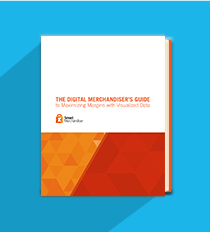
It's that time of year again — when online shoppers begin combing their favorite retail sites looking for sales and clearance deals. It's also the time time when digital merchandisers are tasked with clearing out the last inventory of the season to make space in the warehouse for next season's hot new items.
As the person responsible for hitting increasingly demanding sales numbers, you need all the help you can get as you strategically plan to optimize your eCommerce storefront for the best possible revenue outcomes.
Here are a few ways the top brands ensure they’ll be hitting their best end-of-season sales numbers yet.
Reduce Checkout Friction
High shipping costs can cause many shoppers to abandon their carts. In fact, more than a third of shoppers say that learning about the extra costs associated with shipping later in the checkout process was the reason they dumped their cart. So provide your customers at least an estimate of shipping-related costs as early in the shopping experience as possible.
Increase Your Ability To Be Responsive
If you’re still cobbling together data and information from various software programs, spreadsheets and inventory tools, you’re not putting your business in the best possible position to take advantage of last-minute sales.
By using a visual add-on tool to complement an inventory management software like IBM WebSphere Commerce, you can implement a responsive system for your digital merchandisers.
They’ll be able to integrate all of the data that's available (social media, web analytics, inventory, etc.) and optimize your storefront on-the-fly to handle inventory management, catalog creation and website design that takes advantage of end-of-season shopping trends as they occur.
Maximize Mobile For Ease of Purchase
We know that 4 out of 5 mobile users make purchases from their mobile devices, and in April, Google reworked its search algorithm to reward sites optimized for mobile.
So if your team isn’t dedicated to perfecting the user interface (UI) for your mobile shoppers, you’re literally throwing money away this end-of-season.
- The UI team should always work to improve load times for your site.
- Create and user test sidebar menus to ensure categories are easy to navigate and intuitive.
- Ensure all products are tagged with multiple, accurate attributes to make finding products as easy as possible (even across product categories).
- Touch elements should be at least 7x7mm, and they should be separated by at least 2x2mm to make selecting items in your catalog easy for the average person’s finger size.
- Your development team should ensure that JavaScript is loaded in a non-blocking manner and make use of proper asset caching.
These are just a few of the strategies that top performing eCommerce sites use to ensure they’ll hit demanding sales goals when end-of-season rolls around.
For more information and tips on finding the most efficient ways to handle attribute management and boost conversion rates, download The Digital Merchandiser’s Guide to Maximizing Margins with Visualized Data eBook today!


